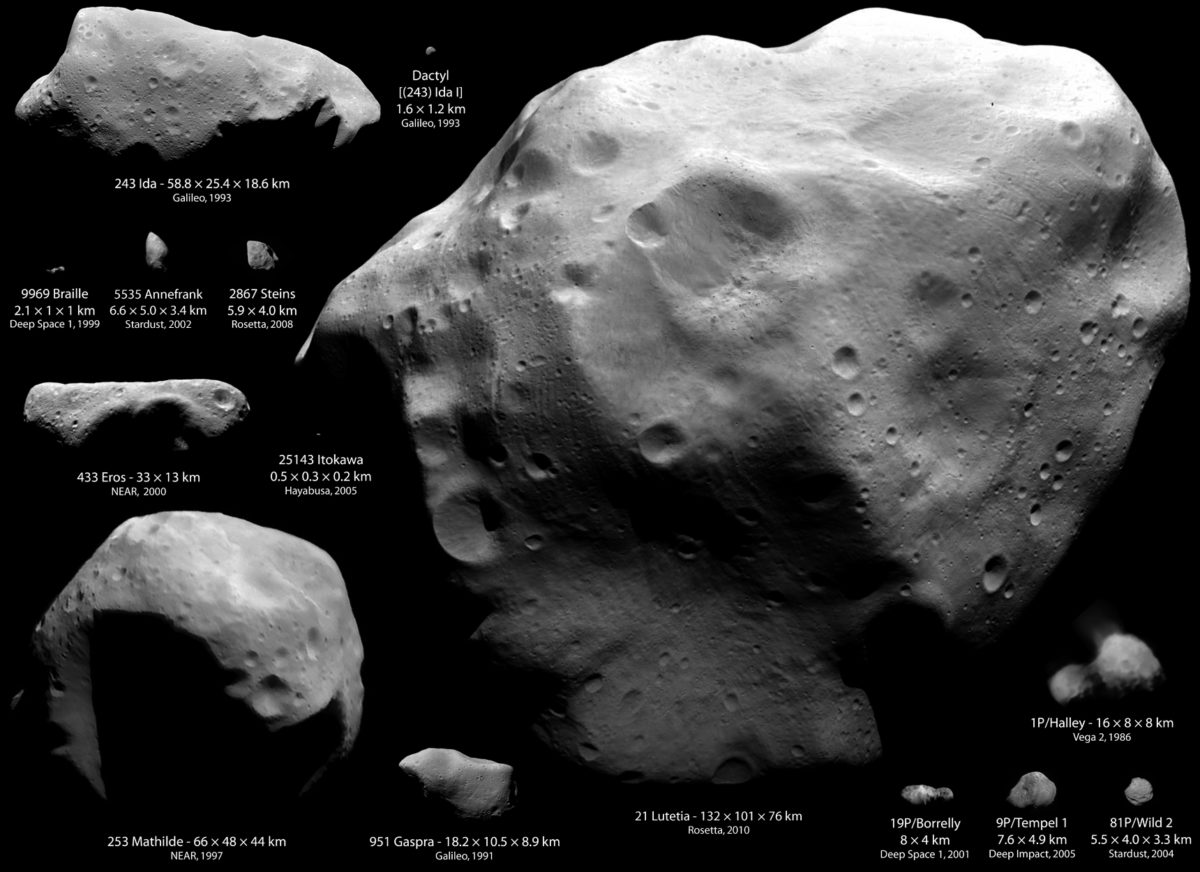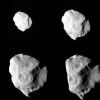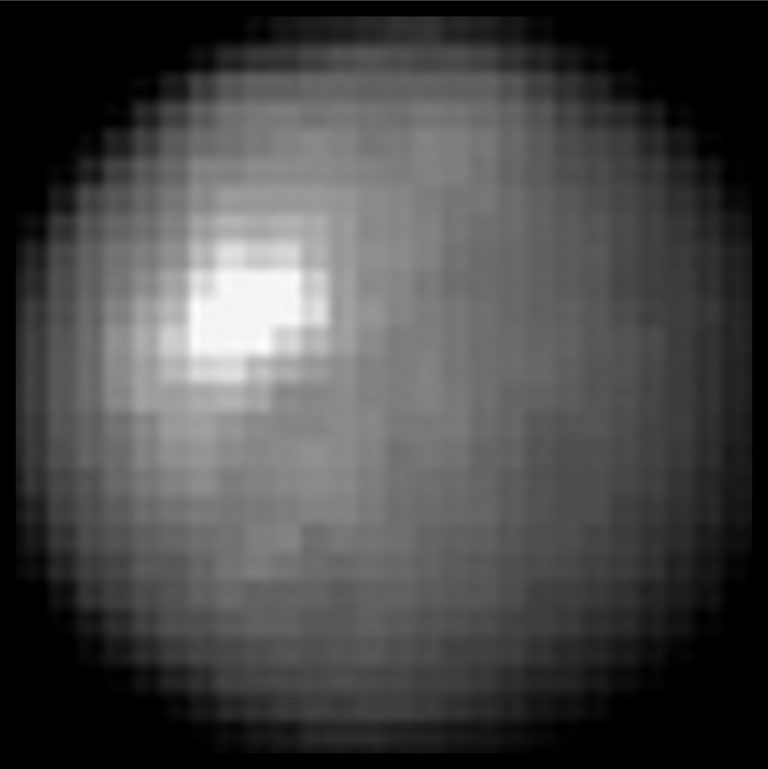Emily Lakdawalla • Jul 15, 2010
How does Lutetia compare to the other asteroids and comets visited by spacecraft?
Almost a week after Rosetta flew past Lutetia, the asteroid is now a distant pinprick of light to the spacecraft, and the science team is getting down to the business of analyzing their data. To help them place things in context, I've prepared a new version of my "asteroids and comets to scale" image, laid out to be easy to drop into your slide presentation software of choice:

The total of four comets and nine asteroid systems (including ten separate bodies) that have been examined up close by spacecraft are shown here to scale with each other (100 meters per pixel, in the fully enlarged version). Most of these were visited only briefly, in flyby missions, so we have only one point of view on each; only Eros and Itokawa were orbited and mapped completely. When Hartley 2 is added to this montage, it will appear approximately the same size as Dactyl or Braille -- much smaller than the other four comets that have been visited to date (which are grouped in the lower right corner).
This image is also available without text, and as a larger version at 20 meters per pixel (8600x6250 pixels, 9.4 MB).
Image: Montage by Emily Lakdawalla. Ida, Dactyl, Braille, Annefrank, Gaspra, Borrelly: NASA / JPL / Ted Stryk. Steins: ESA / OSIRIS team. Eros: NASA / JHUAPL. Itokawa: ISAS / JAXA / Emily Lakdawalla. Mathilde: NASA / JHUAPL / Ted Stryk. Lutetia: ESA / OSIRIS team / Emily Lakdawalla. Halley: Russian Academy of Sciences / Ted Stryk. Tempel 1: NASA / JPL / UMD. Wild 2: NASA / JPL.Lutetia is big relative to the others, isn't it? I had to totally rearrange things to accommodate its enormous bulk; you might enjoy comparing this to my previous version of the montage, produced following the Steins flyby.
A word on the Lutetia image: I wanted to use one of the two highest-resolution views captured near closest approach, but both of those views were truncated at the edges because the spacecraft was so close to the asteroid; the asteroid grew too large to fit within OSIRIS' field of view. I used the next-to-last image in the series released by ESA, taken two minutes prior to closest approach, and borrowed a bit of the image taken about three minutes earlier to fill in the truncated bit. It's not a perfect reconstruction because Lutetia's motion past the asteroid made it appear to rotate between the two images; but it's close enough for this montage. I was aided in this endeavor by Daniel Muller, who was able to calculate range information for me for those four images. With that and OSIRIS' angular resolution of 18.6 microrad per pixel, I figured out the approximate pixel scale of the images (at the center of the visible disk). In case this information will be helpful to anybody else playing around with the photos, here it is:
 | Time before closest approach (min:sec) | Range (km) | Resolution (m/pix) |
|---|---|---|---|
| 8:00 | 8414 | 156.5 | |
| 4:40 | 5635 | 104.8 | |
| 2:00 | 3776 | 70.2 | |
| 1:50 | 3688 | 66.4 |
When's the next time the montage will need to be updated? Not very long from now! On November 4, 2010, Deep Impact will fly past 103P/Hartley 2, and we'll have another comet nucleus to add to the lineup. It shouldn't affect the layout much, though, because Hartley 2 will be one of the smaller bodies visited by a spacecraft; its nucleus is estimated to be only a bit over a kilometer across, about the size of Dactyl. Next year, on February 14, Stardust will fly past Tempel 1 again, hopefully giving us a view of the comet nucleus with its new crater, but since Stardust's camera is not as good as Deep Impact's I think it's likely I'll choose not to update the photo.
But next summer, about exactly a year from now, Dawn will arrive at Vesta, the asteroid belt's second-largest resident. And while Vesta is technically an asteroid, it won't make a whole heck of a lot of sense to include it with this montage. To get a sense of how Vesta compares to all the things that we've visited before, here is Vesta and the same montage as above, presented at the same scale of two kilometers per pixel:
Of course, Dawn's going to go on to visit Ceres in 2015...here's that one, again at 2 km/pixel...
They're just not in the same class, are they?
The Time is Now.
As a Planetary Defender, you’re part of our mission to decrease the risk of Earth being hit by an asteroid or comet.
Donate Today

 Explore Worlds
Explore Worlds Find Life
Find Life Defend Earth
Defend Earth



